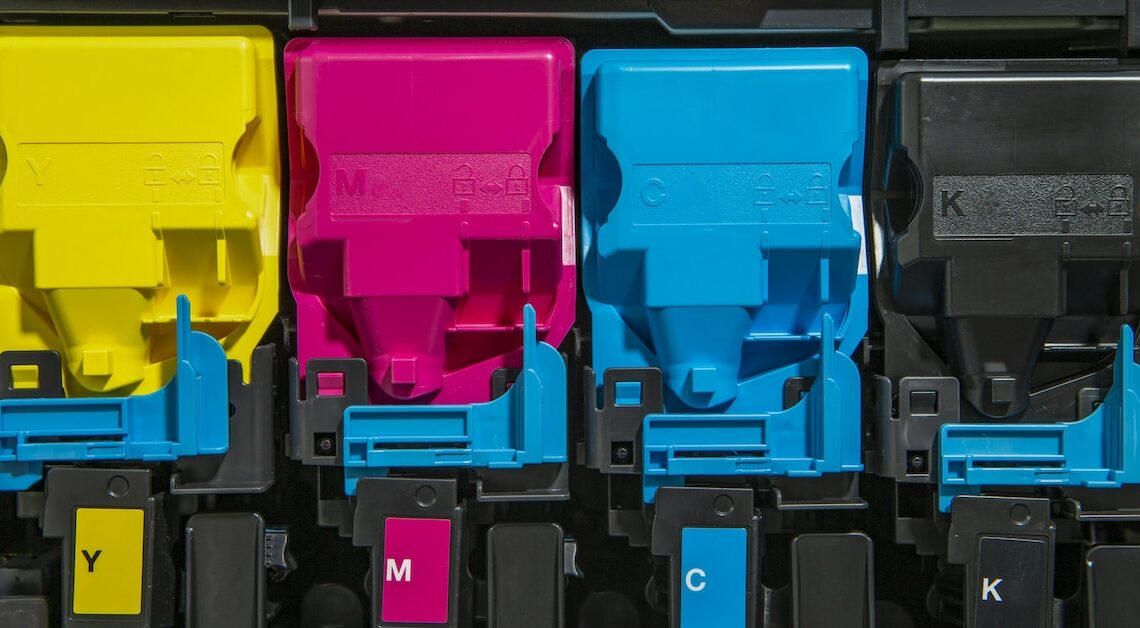
There is a difference between toner and drum. While toner refers to the material used for printing, the imaging drum ensures the correct image.
Toner – drum: difference between the two printing units
Toner and imaging drum are two essential components in a laser printer that are often confused with each other, even though they perform different functions. Sometimes toner and imaging drum are combined in one unit, especially in smaller printers or multifunction devices. In other cases, they are separate and must be replaced independently.
- Toner is a fine powder that serves as a printing material. It usually consists of a mixture of plastic particles, carbon and other color pigments.
- Toner is often the Toner cartridge This is where the toner powder is found that is used for printing. It can be black or blue, yellow and red.
- Toner is used in Printing process onto the paper to create the text or image. In a laser printer, the toner is drawn onto the imaging drum by static electricity and then fixed to the paper by heat and pressure.
- Die Image drum is a cylindrical component in a laser printer that is sensitive to light. It is also called a drum kit, photoconductor or simply a drum. When printing is started, it becomes statically charged. The drum is discharged by laser where the toner from the cartridge is supposed to stick.
How an expression comes about
The entire printing process in a laser printer is a complex one. In particular, the toner and the imaging drum must work together perfectly. The imaging drum transfers the image to the paper in the form of toner, while the toner is the actual printing material. Cleaning the drum at the end of each printing process is crucial to maintaining print quality and preparing the device for the next job.
- Initialization of the image drum: The image drum is a light-sensitive cylinder. It is evenly electrostatically charged by a so-called charging corona or charging roller. The process creates an even positive or negative charge on the drum surface.
- The creation of the image: To create an image, a laser beam is guided over the surface of the image drum through a complex system of mirrors and lenses. In some printers, this is done by an LED strip. The laser beam specifically illuminates the areas on the drum that will later display the image or text. The electrostatic charge of the drum is neutralized in the illuminated areas, while the unlit areas retain their charge.
- Apply toner: The toner, which is stored as a fine powder in a separate compartment in the printer, is now fed to the imaging drum. It is also electrically charged, often with an opposite charge to the imaging drum. The toner only adheres to the areas of the drum that were discharged by the laser beam. This creates a negative of the image or text to be printed on the imaging drum made of toner particles.
- Toner transfer to the paper: The paper is fed through the printer and passes the imaging drum. Before this, it is also electrostatically charged by a transfer corona or transfer roller, but with a stronger charge than that on the drum. This draws the toner from the drum onto the paper.
- Unloading and cleaning the drum: After the transfer, the image drum is freed of any residual charge by a discharge unit so that it can be reused for the next printing process. In addition, the image drum must be cleaned of residual toner particles after each printing process so that no residues affect the next print. This is done by a special cleaning unit.
- Fixing the toner: The paper, to which the toner now adheres, passes through a fixing unit. This consists of heated rollers that permanently fuse the toner onto the paper using pressure and heat (approx. 180-200 °C). After the toner has been fixed onto the paper, the paper leaves the printer and the printing process is complete.
Toner and Drum – Fast Facts
Both the toner and the drum are crucial for a clean print image. Both should always be in good condition and regularly maintained or replaced. Your printer supports you with maintenance messages so that the print image does not fade or become dirty.
- Replace printer drum: The message means that the imaging drum has reached the end of its life and needs to be replaced. Over time, the drum can become worn or damaged by constant printing, affecting print quality. Common signs of this are streaks, spots or shading on the prints. Faded or irregular print images and repeating patterns of prints on the paper also indicate a defective drum.
- Printer drum life: The imaging drum is a consumable part and has a limited lifespan, which is usually specified as the number of pages printed: Depending on the model, drums last between 30,000 and 100,000 pages. After this time, the drum can no longer deliver the required print quality. Therefore, a replacement is necessary to continue to obtain clear and clean prints.
- Replace toner: The message indicates that the toner cartridge is almost empty or completely used up. The printer informs you about the toner shortage in order to ensure that high-quality prints continue to be produced. Faded or incomplete print images can also occur if the toner is too low.
- Toner life: The lifespan of a toner depends on several factors, including the capacity of the toner cartridge, the volume of printing and the types of documents printed. While standard cartridges have a range of 1,000 to 3,000 pages, high-performance cartridges can print between 5,000 and 10,000 pages.
- Toner lasts longer if you mainly print simple text documents. If you have to print a lot of graphics, images or presentations that require higher toner coverage, the toner will be used up faster.
